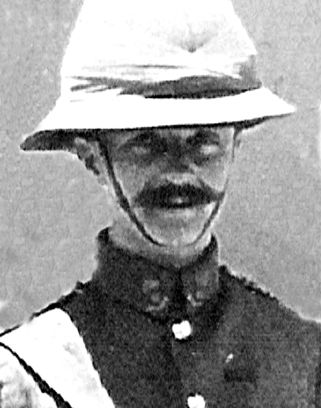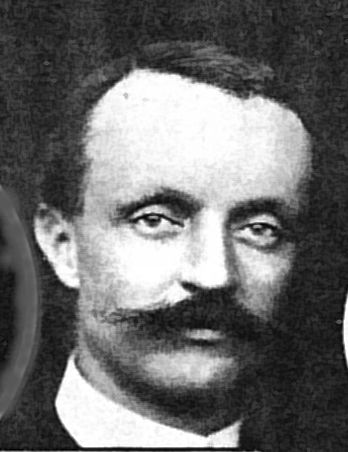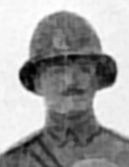View entry
Name: SMITH, George Edward CMG, DSO (Brig.-General, RE) 'Uganda Smith' 'Road Smith'



Nee: son of Archibald Smith, FRS, bro of Lt. Charles Stewart Smith (RN)
Birth Date: 6.8.1868 Putney, London
Death Date: 7.11.1944 Tunbridge Wells
Nationality: British
First Date: 1893
Profession: Known as 'Uganda Smith', he was Capt. Sclater's right hand man in making the road from Kibwezi up through Nairobi to the Highlands of EA. Stephen Ellis's ledger shows him as Major G.E. Smith, Director of Surveys, June 1909
Married: none in Who's Who
Book Reference: Gillett, SE, Hobley, Ainsworth, Golf, Cranworth, Roosevelt, Debrett, North, Playne, Drumkey, AJ, DSO, Nicholls, EAHB 1907
War Service: Royal Engineers
School: Winchester and RMA, Woolwich
General Information:
Ainsworth - In 1902 Major G.E. Smith, R.E., brought the first motor car to Nairobi, 'a strange-looking vehicle with a door at the back for passengers'.
Golf - Present at the first recorded committee meeting of Nairobi, later Royal Nairobi, Golf Club in 1908
Cranworth - Head of the Survey. He too was fond of any form of sport, especially shooting, polo and golf, and managed to get his fair share of them.
Roosevelt - One of my friends, Capt. Smith, RE, Director of Surveys in the Protectorate, had figured in another zebra incident to which only Mark Twain could do justice. Capt. Smith lived on the outskirts of the town, and was much annoyed by the zebras tearing through his ground and trampling down his vegetables and flowers. So one night, by his direction, his Masai servant sallied out and speared a zebra which was tangled in a wire fence. But the magistrate, a rigid upholder of the letter of the law, fined the Masai for killing game without a licence! Capt. Smith decided that next time there should be no taint of illegality about his behaviour, so he got ropes ready, and when the zebras returned, he and his attendants again chased them towards the wire fences, and tied up one which got caught therein; and then with much difficulty he led it down town, put it in the pound, and notified Capt. Sanderson, the town clerk what he had done. This proceeding was entirely regular, and so was all that followed. For 7 days the zebra was kept in the pound, while the authorities solemnly advertised for a highly improbable owner; then it was sold at auction. (Public Auctioneers, Raphael & Co.)
Debrett - entered RE 1888, became Capt. 1899, Major 1907, Lieut.-Col. 1915, Brevet Col. 1919, Col. 1920, and Hon. Brig.-Gen. (retired) 1922; S. Africa 1901-2 (Queen's medal with 5 clasps), European War 1914-18 as Assist. Director of Works in France, and Director of Works in Italy (despatches, DSO, Legion of Honour, Brevet Col., Order of S.S. Maurice and Lazarus of Italy); was 2nd in command of Expedition constructing Sclater Road from Mombasa to Victoria Nyanza 1895-7; acted as Assist. to Anglo-German Boundary Commr. in BEA 1891-2, and as Commr. and Mil. Com. Anglo-German Boundary Commn. 1904-6; was Director of Surveys, BEA 1906-10; is a FRGS (Murchison Award 1907)
North - arr. Zanzibar from Europe 30/6/1892; dep. Zanzibar for boundary survey between BEA & GEA 7/7/1892 with brother Lieut. C.S. Smith RN; dep. Zanzibar for Suez & England 20/3/1893; dep. London 5/5/1895 and listed as Civil Employment Uganda from 10/5/1895; appt. 2 i/c of the Capt. B.L. Sclater road building crew, Kedong to Kibwezi 1895; arr. Fort Smith 12/11/1895; Machakos Dec 1895; Kikuyu Sept 1896; road finished June 1897, due to return to England
Playne - Major Smith received the Murchison Award in 1907 from the Royal Geographical Society "for important surveys in British East Africa". He was born at Putney, London, on August 26, 1868, and educated at Winchester and Woolwich. He first arrived in EA on June 20, 1891. His present appointment as Director of Surveys dates from June 20, 1906. Previous services: Anglo-German Boundary, 1901-02; Sclater Road 1905-07; Anglo-German Boundary 1904-06. Major Smith has also done military work in England, Canada, and South Africa. He has the Queen's medal, SA, with 5 clasps.
Drumkey 1909 - Survey Department - Director of Surveys
Agricultural Journal 1908 - 'Rapid Allotment of farms in the Uasin-Guishu' by Major Smith, RE. - …….. February 1 1908 - The Director of Agriculture, myself (Director of Surveys) Mr Scholefield, representing the Land Office, Mr Flemmer, the Members of the Rapid Allotment Board, together with Mr Galbraith (District Surveyor) left their respective starting points by rail for Londiani station. 2 February - Reached Londiani met Mr Cox (Surveyor Trigonometrical Branch) Commenced march to Ravine 3 February - Reached Ravine station. Mr Fotheringham's cart with 6 oxen engaged. 8/9 March - Gualgaria river at Nandi border, 110 farms [marked] in 31 days.
DSO - Director of Surveys, E. Africa Protectorate 1906-10 ………… He won the Fencing Officers' RM Tournament, 1890; Curled twice for England v Scotland whilst Member of Prince's Curling Club.
Mills Railway - 'in order to build the new road, Government employed Captain B.L. Sclater, Royal Engineers, who had carried out similar work in Nyasaland (Malawi). He arrived in mid 1895 and had 5 other British sappers to assist him, Lieutenant Smith and 4 NCOs. Their orders were to build a road from Kibwezi to Port Victoria, 415 miles, and complete it by the end of March 1896. It was impossible to keep this deadline, because reinforcements of 100 Indian Army sappers, Woolwich carts and draught animals did not reach Mombasa until October, when Sclater took them up-country. Smith had by then established a base at Muani, 50 miles beyond Kibwezi. Wakamba labour was apparently readily available, in contrast to the experience of the railway 3 years later, and some of them worked on the road all the way to Port Victoria.
Although there was never any chance of completing the road by the appointed day, Sclater and Smith made rapid progress. .….….….. The first carts entered Port Victoria on the last day of 1896, and work on the bridges was completed 4 months later. Sclater's Road, as it came to be known, cost £17,000 or £44 per mile in contrast to the £17 per mile which was all that was paid to Sir William's {Mackinnon} heirs for Mackinnon Road after the IBEA Company was wound up.
Much of Sclater's Road is still in use, especially North West of Nakuru, and elsewhere the later roads never stray far from it and Mackinnon Road.. In the days before the Railway was completed the roads served their purpose well, because not only did faster and heavier traffic use them but, perhaps more important, they made England independednt of the German route to Entebbe and Kampala. Sclater died from blackwater fever in Zanzibar in 1897 not long after the completion of his road.
